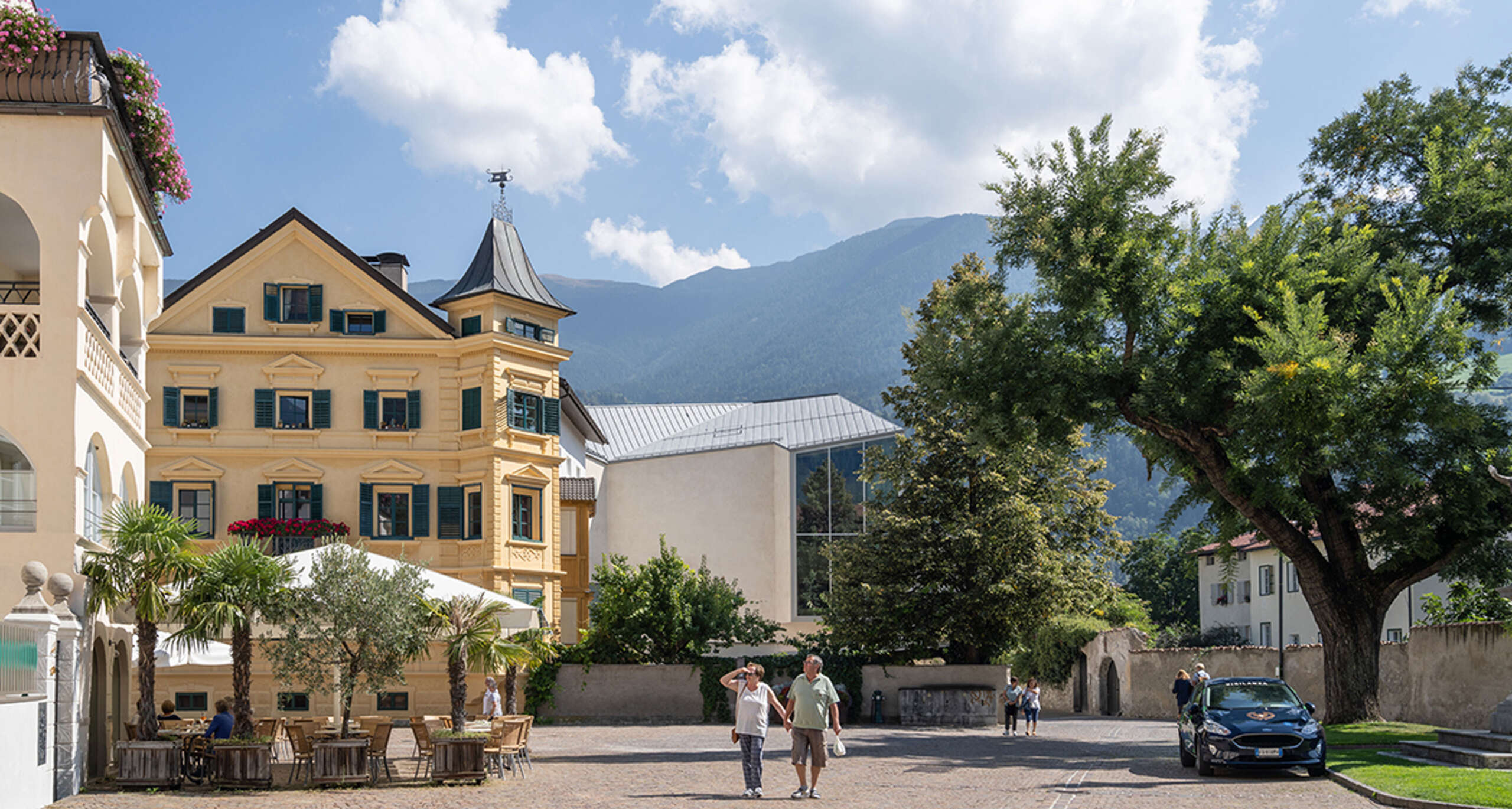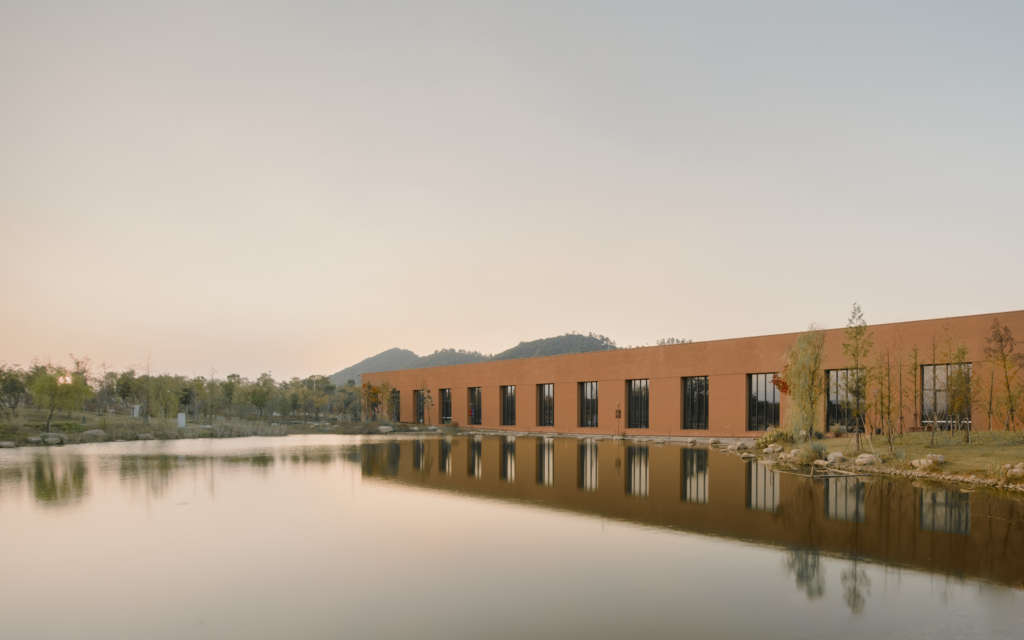
The following description is courtesy of David Chipperfield Architects.
Founded in 1929, the Zhejiang Museum of Natural History is located in Hangzhou and has a collection of over 200,000 specimens covering geology, ecology and palaeontology. The eastern Chinese province of Zhejiang is the site of many important discoveries from the Cretaceous period. A new, second branch of the museum has been established in Anji, in the north of the region, forming the centrepiece of a new cultural district.
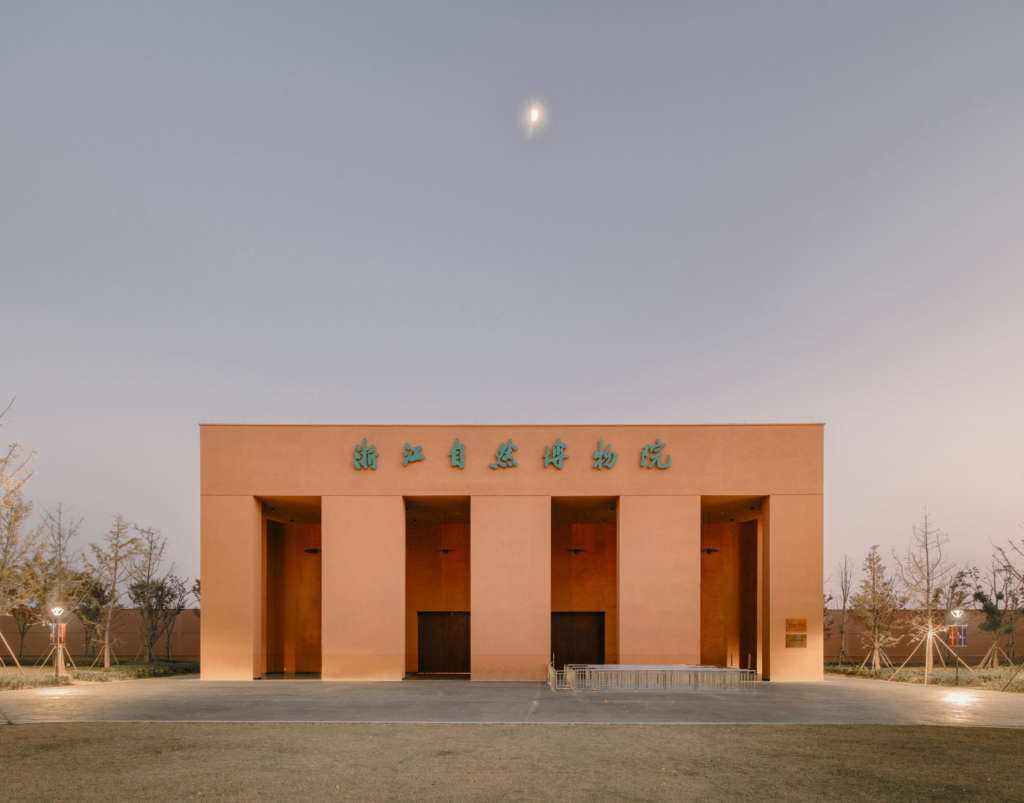
The new museum is set on a sloping site in a large natural park surrounded by bamboo forests and overlooking rice fields in the valley below. It comprises a loose infrastructure of spacious exhibition halls, taking into account the large scale of some of the exhibits: Dinosaur fossils and life-size models, large-scale wildlife dioramas, accompanied by multimedia and interactive exhibition elements.
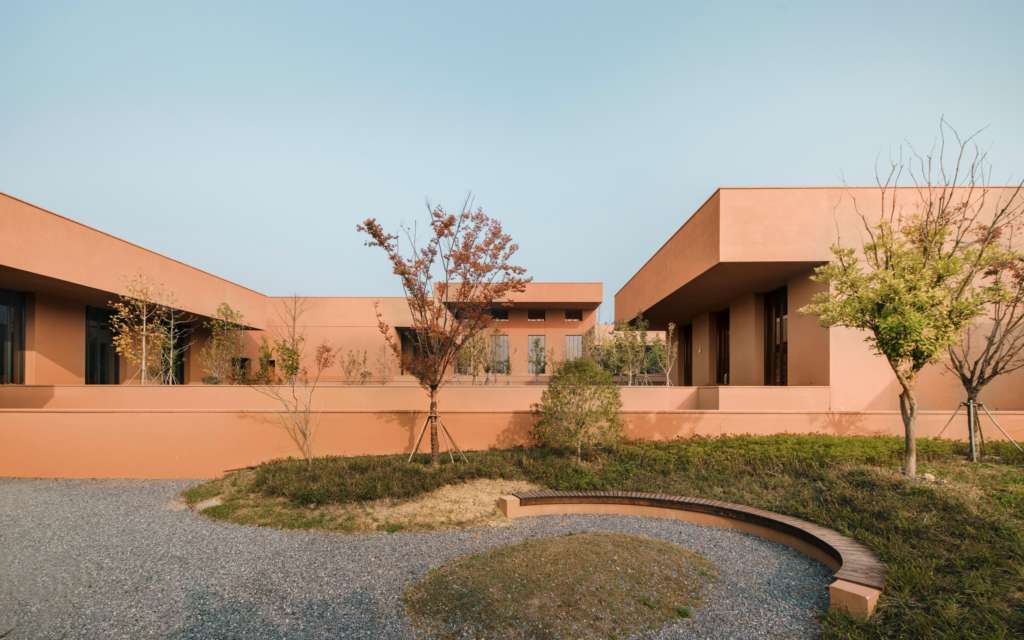
The staggered composition of the eight, single-storey, bar-shaped pavilions step down the hillside. They follow the natural topography, minimising the visual impact on the landscape, and frame an open garden. A loggia, or covered walkway, loops around this central space, mediating between the external and internal areas of the museum.
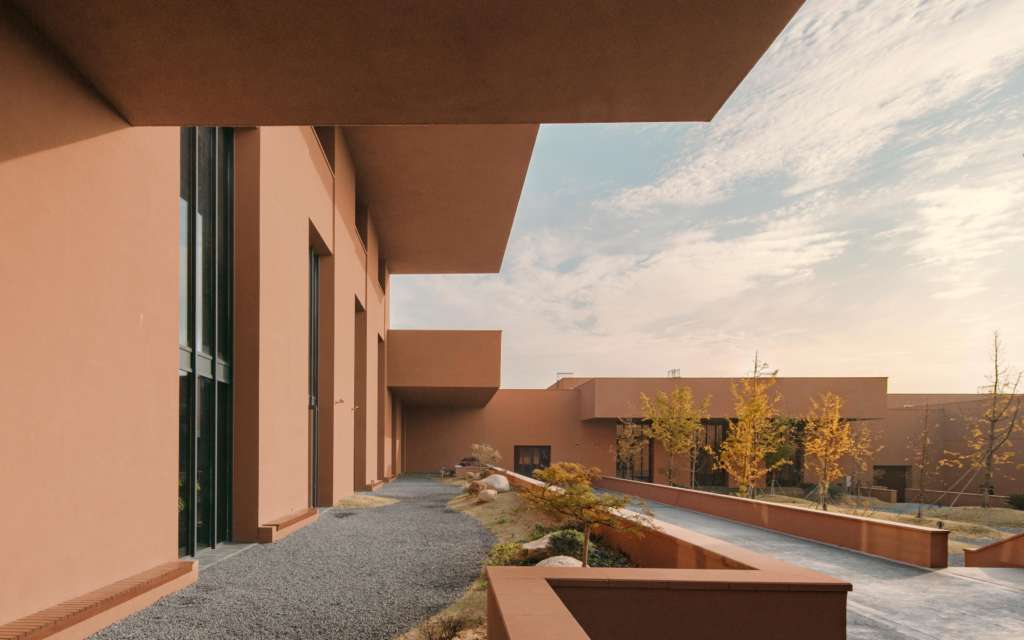
At the northernmost point, an entrance pavilion welcomes visitors and offers views over the central garden and landscape beyond. Located on either side of the garden, each exhibition hall can be accessed directly or in sequence following the stepped loggia. The southernmost pavilion faces out towards a lake at the lowest end of the site.
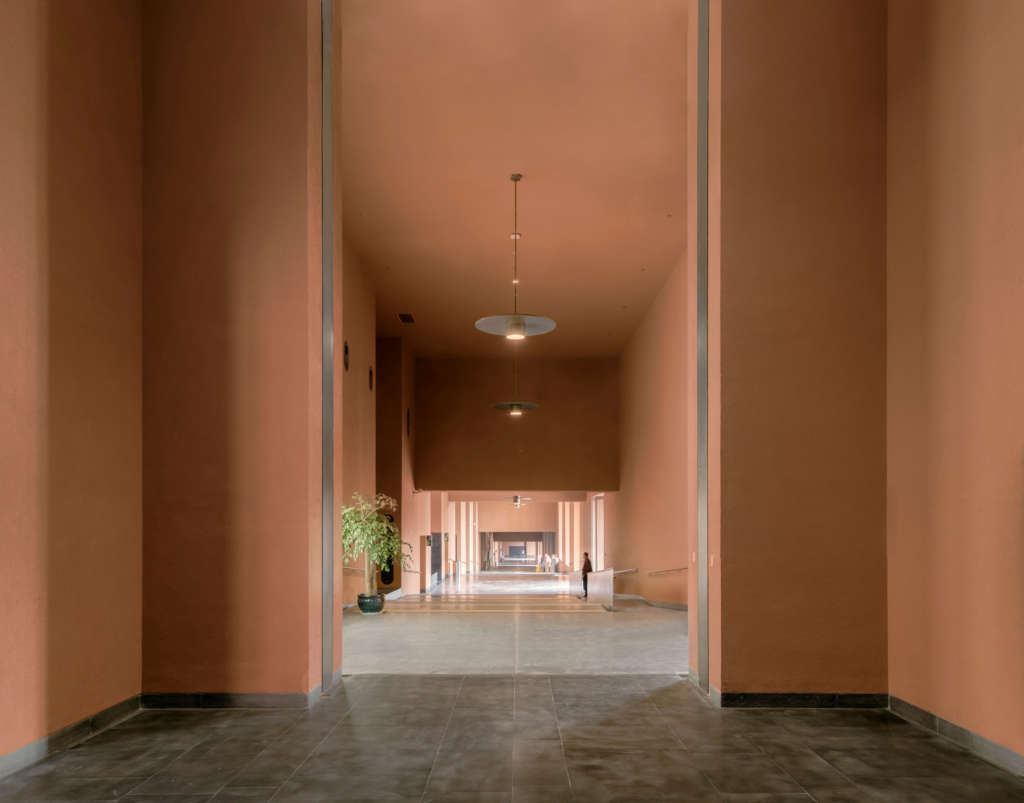
The solid forms of the pavilions are embedded within the dense landscaping of the central garden and the surrounding parkland. The planting extends onto the green roofs of the building complex which is rendered in red ochre to match the clay earth of the hillside site, reinforcing the relationship between the museum and the landscape.
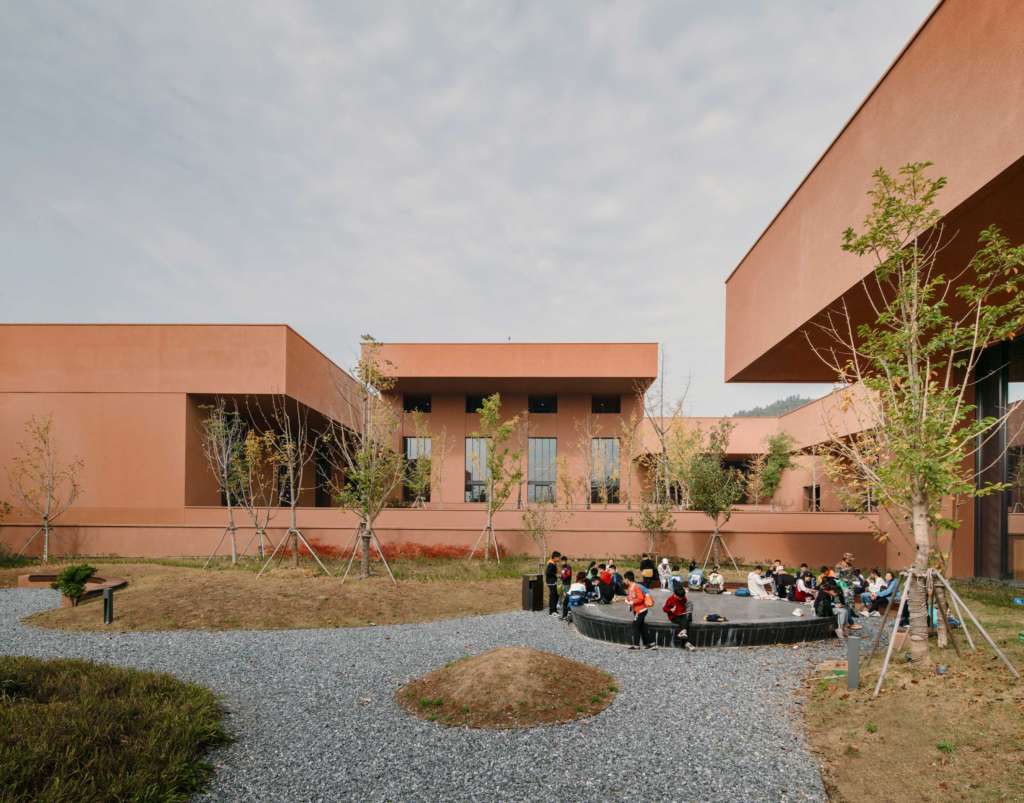
Project Details
Project Start: 2014
Completion: 2018
Opening: 2019
Gross Floor area: 58,000 m²
Client: Zhejiang Museum of Natural History, People’s Government of Anji County
Architect: David Chipperfield Architects Shanghai
Partners: David Chipperfield, Mark Randel (Design lead), Libin Chen
Project Architects: Alessandro Milani (Competition), Miguel Angel (Preparation and brief
to Developed design), Shen Huiwen (Developed design, Design intent details), Chuxiao Li (Site design supervision)
Project Team: Hans Christian Buhl, Zhexu Du, Tianyuan Fan, Jinghui Hou, Andrew Irvin, Han Li, Huiqun Liu, Jidi Pan, Fengjuan Sun, Nora Wuttke, Liping Xu, Zhixun Zhou; Visualisation: Andrew Irvin
Competition Team: Zhexu Du, Fengjuan Sun, Nora Wuttke, Liping Xu; Graphics, Visualisation: Alessandro Milani, Zhexu Du In collaboration with
Local Design Institute: Zhejiang South Architecture Design Ltd., Hangzhou (Technical design to Construction supervision)
Structural Engineer: Ove Arup and Partners Ltd., Shanghai (Concept design); Zhejiang South Architecture Design Ltd., Hangzhou (Developed design to Construction supervision)
Services Engineer: Ove Arup and Partners Ltd., Shanghai (Concept design); Zhejiang South
Architecture Design Ltd., Hangzhou (Developed design to Construction supervision)
Building Physics, Acoustics: Zhejiang South Architecture Design Ltd., Hangzhou
Lighting Consultant: Sunlux Lighting Design, Hangzhou
Exhibition Planning: Triad China Ltd., Shanghai
Landscape Architect: Levin Monsigny Landschaftsarchitekten, Berlin (Concept design), Zhejiang South Architecture Design Ltd., Hangzhou (Developed design to Construction supervision)


